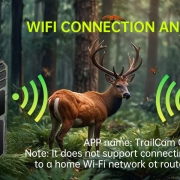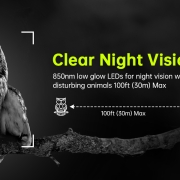The Evolution and Utility of Hunting Cameras
Hunting cameras, often referred to as trail cameras, are essential tools for wildlife enthusiasts and hunters alike. These cameras are designed to capture high-quality photos and videos of wildlife in their natural habitats. They utilize motion sensors to trigger the shutter when an animal passes by, allowing users to observe the behaviors and patterns of different species without intruding into their environment.
Definition and Functionality
A hunting camera is a device equipped with infrared sensors and high-resolution imaging capabilities. Typically weatherproof and equipped with night vision technology, these cameras can operate in various environments, making them an invaluable asset for tracking wildlife. Users can place these cameras on trails, feeding sites, or near water sources to capture evidence of animal activity. Most modern models come with features such as wireless connectivity, allowing users to receive images directly to their smartphones or computers, thereby making it easier to monitor wildlife remotely.
Usage Scenarios
The applications of hunting cameras extend beyond just hunting. Wildlife researchers utilize them to study animal behaviors, population dynamics, and migration patterns. They serve as useful tools for land management in understanding the impact of wildlife on flora and fauna. For hobbyists, hunting cameras offer a unique chance to observe various wildlife without disturbing their natural surroundings. They are also increasingly popular for security purposes, helping property owners monitor trails or remote areas.
Evolution of Hunting Cameras
The history of hunting cameras traces back to the early 20th century when simple photographic traps were rigged to capture images of wildlife. Over the decades, technological advancements have led to significant improvements. Initially, these cameras were cumbersome and required manual film changes. The advent of digital technology in the late 20th century revolutionized this genre, bringing about models that were lighter, more reliable, and capable of capturing quality images in low-light conditions.
In recent years, hunting cameras have embraced the smart technology trend. The introduction of solar-powered model, Wi-Fi model and 4G network models has taken the field by storm, making them more user-friendly and efficient. The development of high-definition video capabilities allows for an even closer look at wildlife behavior, providing invaluable insights for both researchers and avid hunters.















